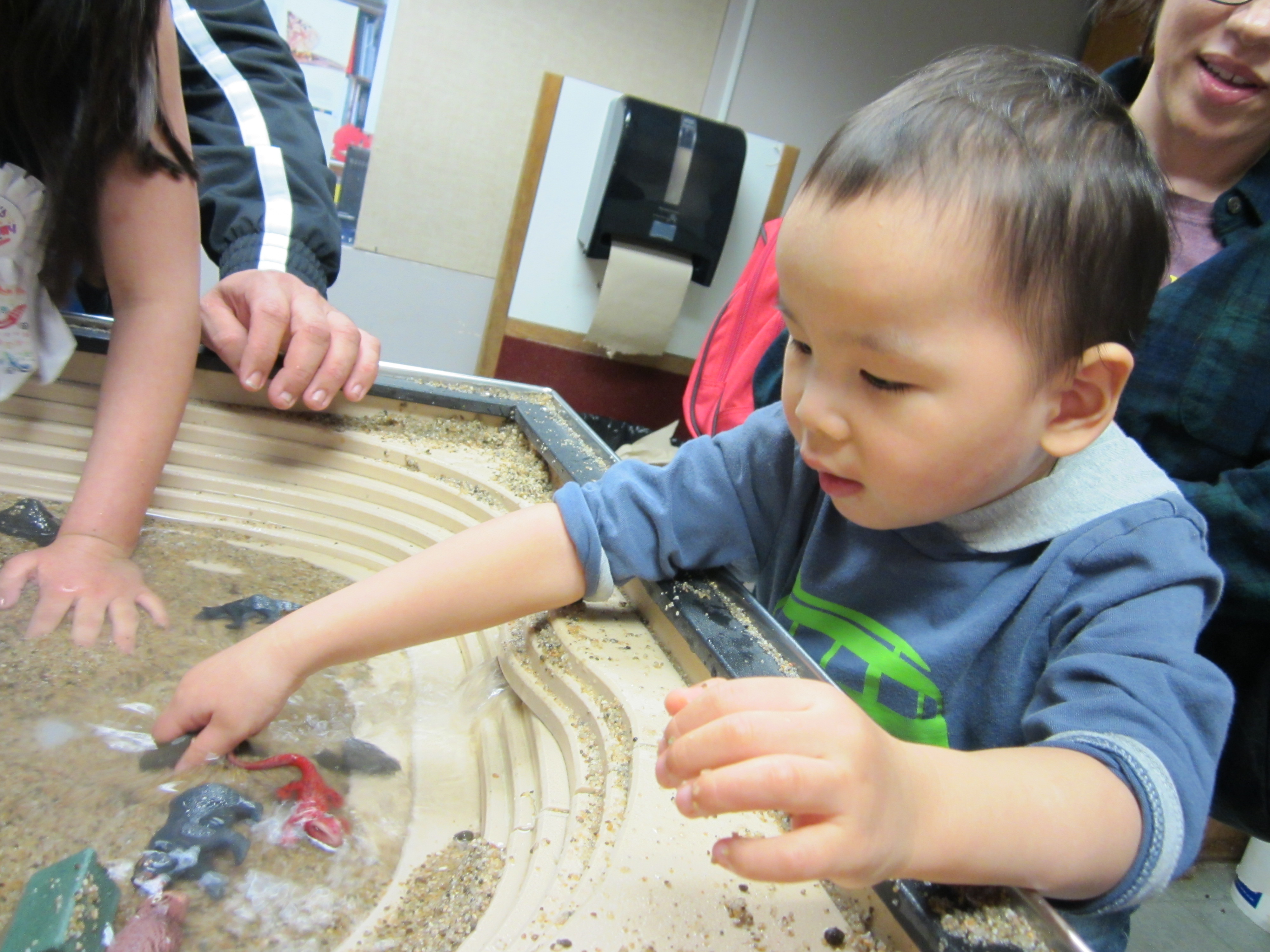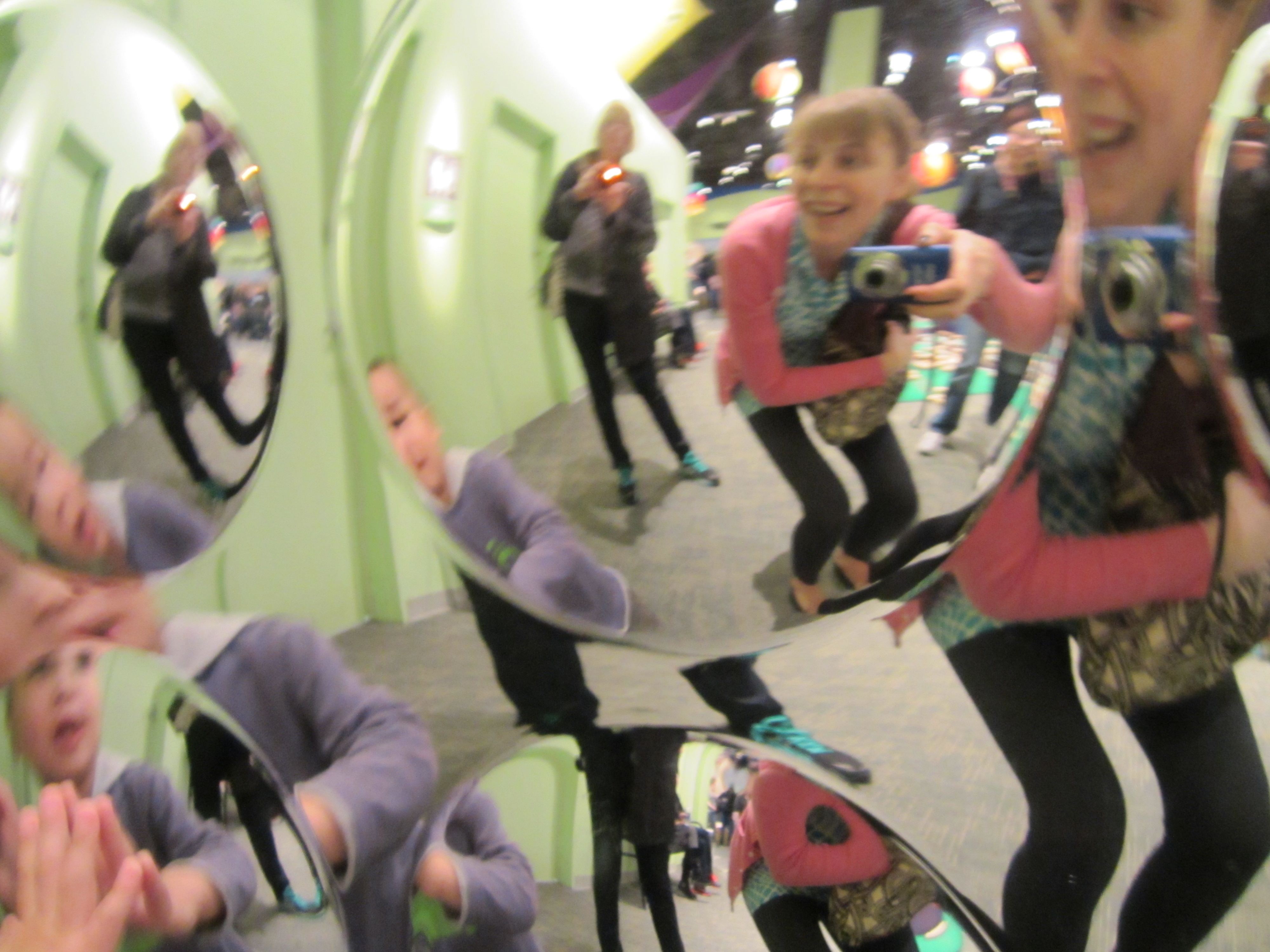Yesterday a dear family friend visited Portland with her outgoing two-and-a-half-year-old son, Tai. We went to OMSI, where I hadn’t been since I was not much older than Tai. I remembered pushing buttons to make different part of a model’s nervous and circulatory systems light up, and standing beneath the enormous jaw bone of a shark.
Despite a long line, Tai was delighted with the trip the moment he spied a plane made out of duct tape, a part of the MythBusters exhibit. He was curious about everything, from the virtual reality ride that made all the noise with the pistons and compressed air to the puzzle where you have to fit a square block through the square hole.

I reignited my own open-mouthed wonder at an exhibit on the stages of fetal development. It began with a photo of a newborn that covered one wall; Monica explained that there was a baby in my tummy, too. He pointed to my bump. “Baby,” he said. I melted.
The main exhibit contained actual embryos and fetuses—as well as a few uteruses—from ages four to 32 weeks. I leaned in close to see what Peeper must have looked like back when we called it Appleseed: a tiny speck of a creature. I slowly walked along, imagining our own baby at each stage.
The folks behind me, a father with two children, talked about each step they passed. They guessed at the sex of each fetus and marveled at the miniature fingernails and eyelashes, just as I did. “What’s that coming out of its belly, dad?” the little boy wondered, pointing to the umbilical cord. “That’s what connects the baby to the mother, and when you came out and we cut it, it left behind your bee bo.” (This last bit of kiddie vocab I actually got! It’s a reference to the insanely cute Belly Button Book by Sandra Boynton, whom I apparently must pay close attention to, as I’ve already received three of her board books for Peeper.)
When I got to the fetus at 24 weeks, I was relieved to see it looked decidedly baby-like, not nearly as skinny and (frankly) creepy as the earlier ones. It also looked huge—bigger than a cantaloupe, even—and I tried to wrap my head around a Peeper that size fitting inside me. (No wonder it’s constantly elbowing my insides. Perhaps it’s trying to stretch my uterus to make more room.)
I felt a bit conspicuous as a pregnant woman staring at not-alive fetuses. (Where did the, ah, specimens come from? What happened to their mothers? Gruesome, but it’s science, right?) Really, though, we all fit on that timeline. The kids behind me were maybe at 300 weeks; Tai’s around 170; I’m 1,558 weeks. We’ve just stopped counting in seven-day increments.
And just as I seemed to see into Peeper’s developmental past, I could flash forward when watching Tai. He’s grown so much from the last time I saw him, at Thanksgiving. He knows so many words. And he can throw like a champ now. Yet he still retains the same generosity (offering me pretend oranges and tomatoes from a model fridge at the museum) and enthusiasm (literally dancing in the aisles at Whole Foods in his excitement for lunch) as the first time we met, when he was only weeks into his life with his new adopted family.

So I wonder at where Peeper and I have come from and look forward to the fun he or she will have pushing buttons at the museum. In the meantime, too, I’ll enjoy the now—while marking each Thursday’s graduation into a new week.

Pingback: The origin of Peeper | The Ten Thousand Hour Mama